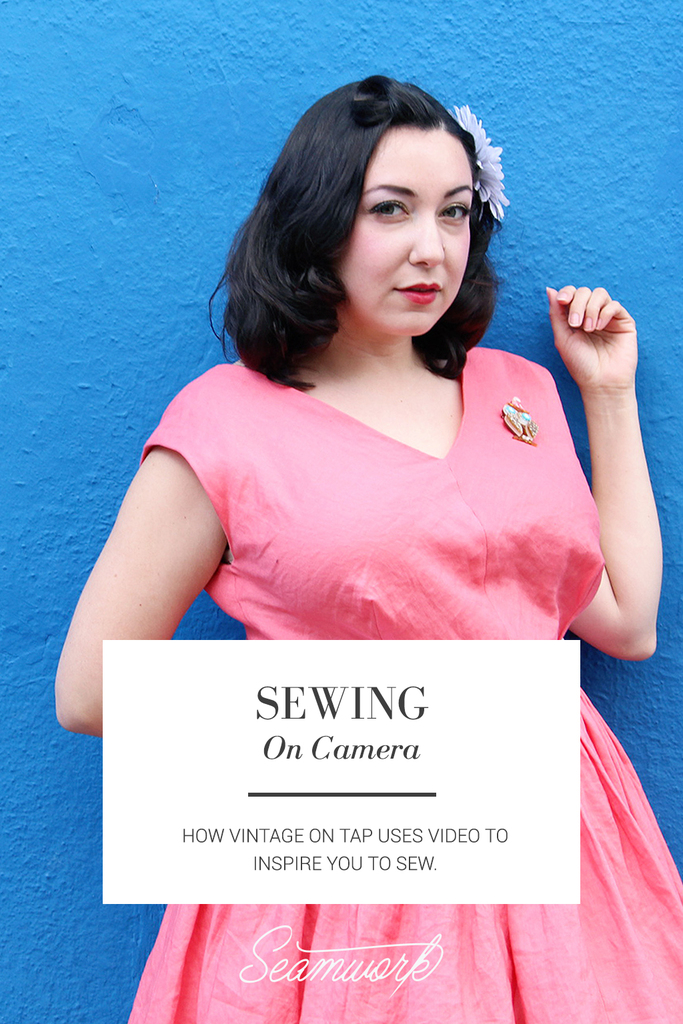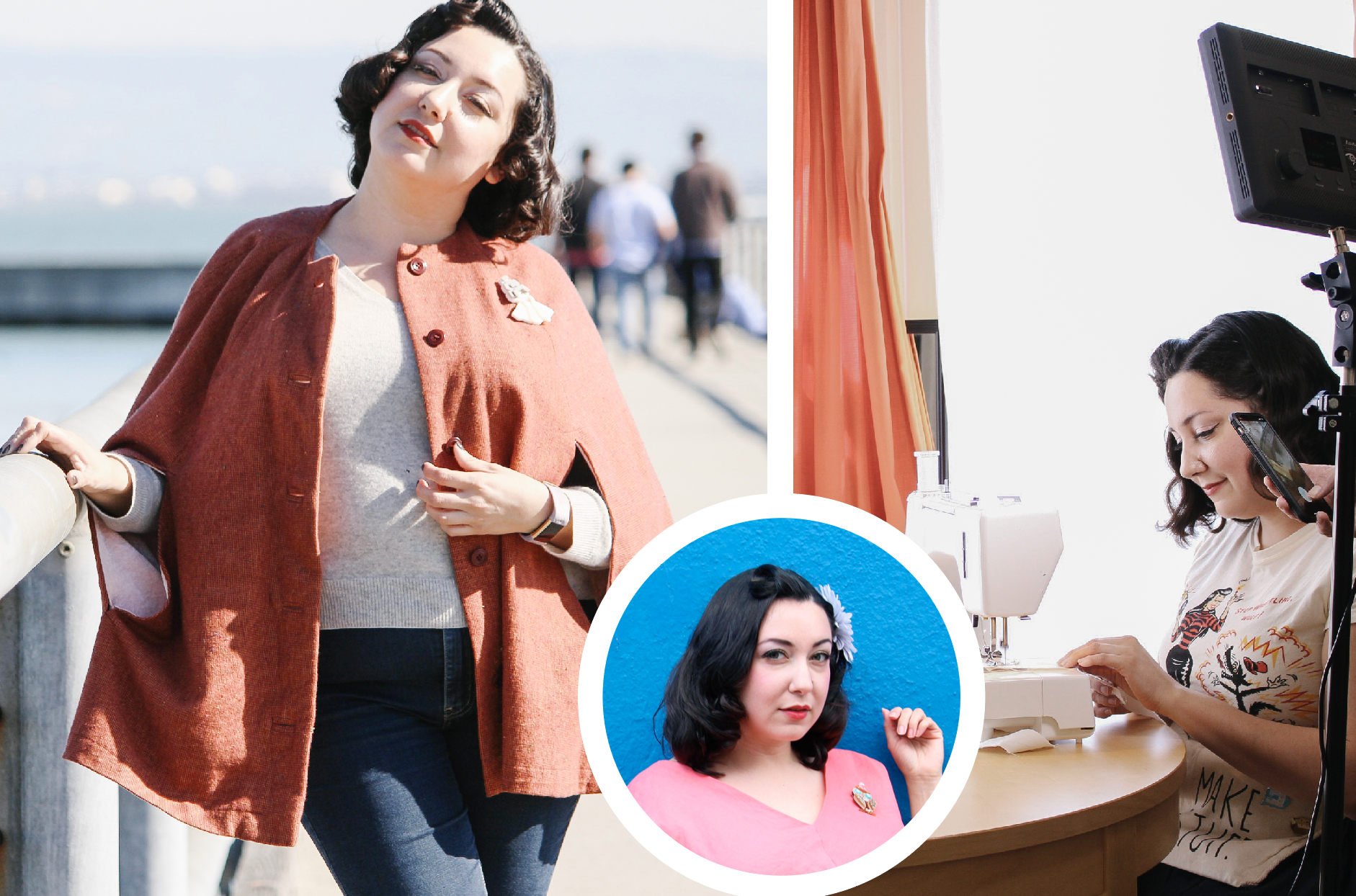
Bianca Santori regularly invites you into her San Francisco apartment, offering you a seat next to her sewing machine and a pretty view from her windows overlooking the city. She walks you through each step of her sewing projects, models muslins, examines fabric, and discusses the vulnerabilities we face about our bodies when we sew—and she does it all on camera.
Vintage on Tap is the name of her endeavors. She has a YouTube channel, interactive website, and a strong social media presence, all centered on her sewing videos.
Bianca recognizes the power of video, especially with sewing. We all have to read step-by-step instructions and make sense of technical illustrations when we sew, but it’s a whole different experience to watch sewing happen on camera. Bianca hopes that her videos will bring this craft to a new level for you, to demonstrate—in action—how great fit and construction influence your happiness and self-esteem.
Dabbling in silhouettes from the 40s, 50s, and 60s, her videos illustrate the power of sewing vintage, and she often puts her vintage spin on Seamwork patterns as well, as one of our ambassadors. We had a few questions about Bianca’s unique practice, like how does she find time to make all of her videos, and what does it feel like to be on camera? So keep reading!
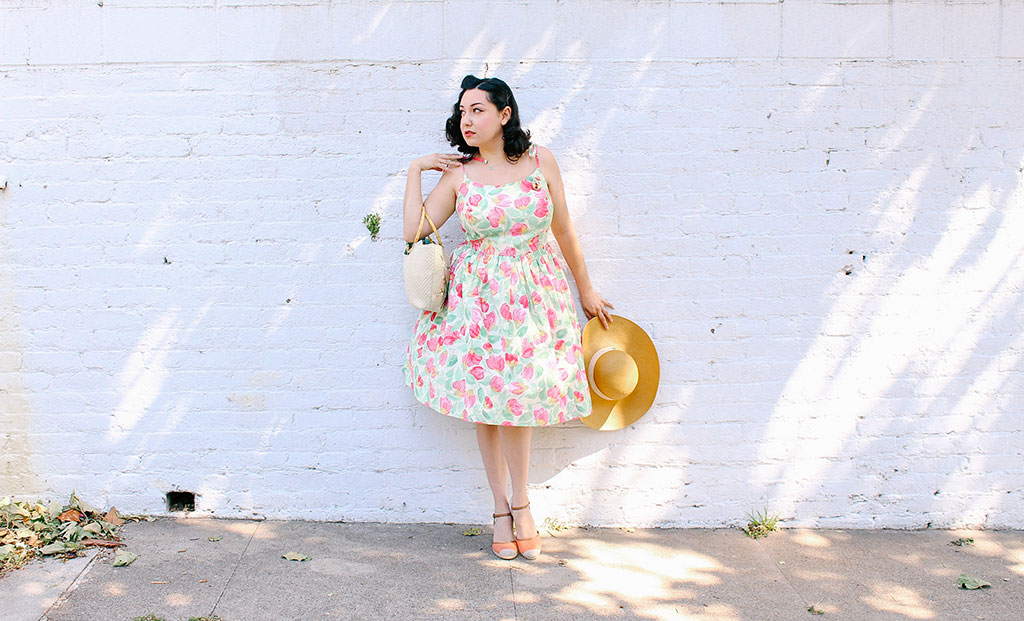
Bianca’s Sewing Story
What’s your sewing story? When did you learn to sew?
Creativity doesn’t run in my family. Growing up, I lived on uninspiring US Navy bases: there was no such thing as a fabric or craft shop to wander into when I was young. My first time with a sewing machine, I struggled making a stuffed animal plush with the help of a teacher. Its left eye ended up lopsided after all my efforts.
The desire to learn to sew came when I was older. Fifteen, and loving Japanese street style that I saw on the internet: specifically Gothic Lolita fashions. The reality that I wouldn’t be able to buy (or fit!) those clothes was the catalyst: Why Not Just Make Them?
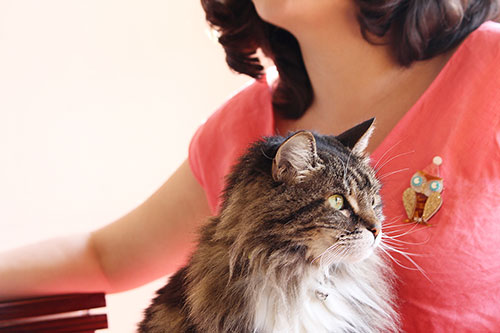
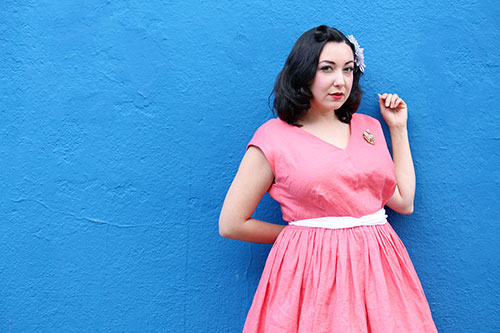
What do you love the most about sewing? What’s your favorite part of the process?
With my own hand, with my own effort, being able to create something I feel confident in has been the biggest reason I’ve pursued it over so many years. I’m an absolute believer in the love and positive energy that a garment holds when it’s pressed for the final time.
Just as when I first started sewing—with a bedsheet as fabric, by the way—I sew out of practicality. My best projects have always been ones that I’ve needed for specific reasons. Dreaming up WOW projects is fun, but the frustration of not finding clothing that fits in stores is a real one. I frequently joke that I’m giving up buying ready-to-wear; I haven’t been into a store in years without being upset at not finding what I was looking for. Or that fits my chest.
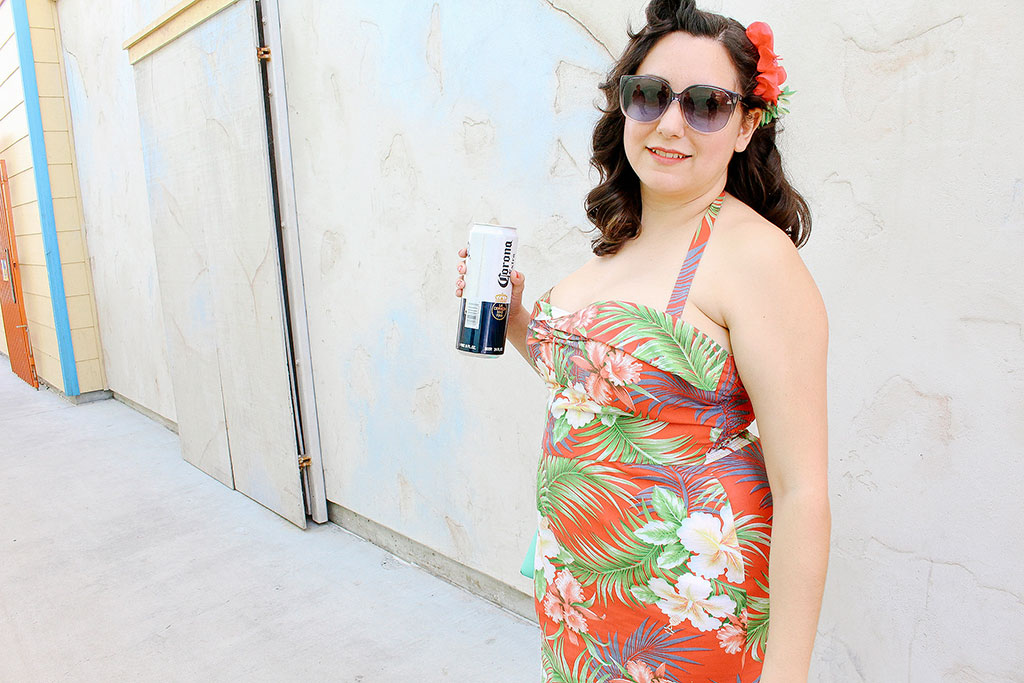
When did you get the idea to document your sewing on video? What is it about the process that appeals the most to you?
Documenting my sewing on video started back in the early days of dating my now-fiancé Jose. We were both art students at the time: I pursued textile and fabric design, and Jose was in film school.
After watching me photograph a sad, frumpy sailor dress I’d sewn, Jose asked whether the photos I was taking really captured how much I loved it. He went so far as to suggest that videos, rather than photos, would appeal more to people.
Since then, making sewing videos has been one of many things which has cemented our relationship. It’s given us something to share and work on together, and we’ve spent many weekends with beer in hand, soccer in the background, filming away.
Sewing Videos: The Day-to-day
How do you decide what projects to document on video?
We decide our projects a few different ways. Sometimes we want to sew a WOW project—something that is drop-dead gorgeous, expensive fabric, will make a killer photo shoot. But sometimes we decide to go with something practical and easy—that won’t give us any fuss. It mainly depends on how busy we are that month.
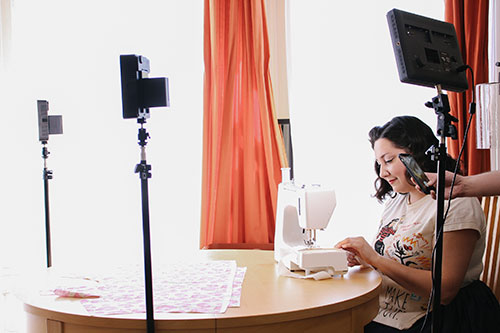
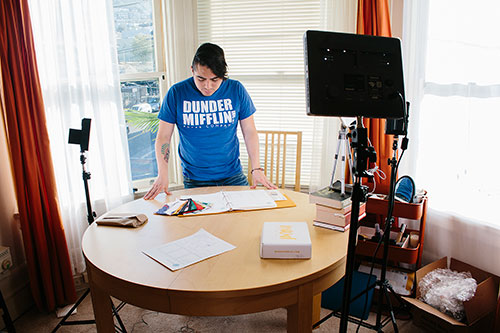
Do you have a team? Who helps you with video and production?
The Vintage on Tap team consists of Jose Vivanco (shooting and producing), Michael de Toffoli (post production), Albondiga the Cat (moral support), and me. Albondiga does most of the heavy lifting.
How long does the video process take?
Each video goes through a minimum of four stages; depending on how complicated the garment is, the time to publish can vary.
Project planning and film pre-production can range from a few minutes to a couple hours. Video Production (the actual shooting of the video) ranges from six hours for a simple garment, to three to four days for a complicated piece. Editing by Jose takes four or five hours, though now Michael, a professional editor, takes much less. Video publication is last, which involves uploading, photo editing, and writing a blog post, and can take an additional two days.
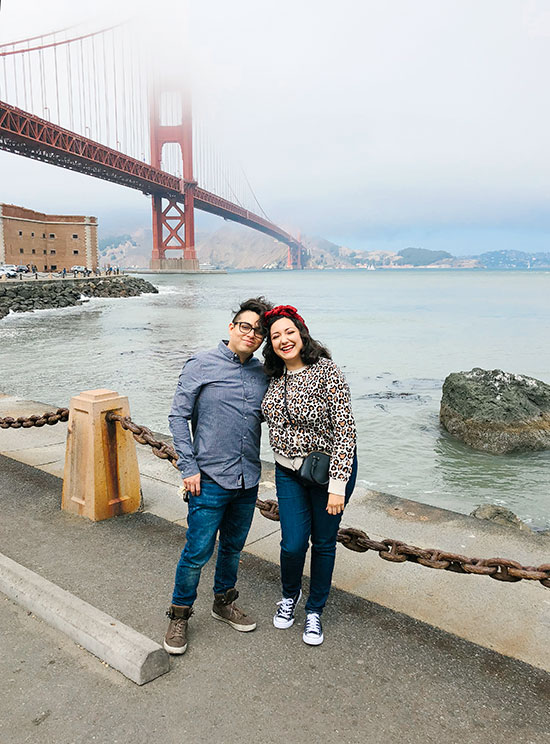
Describe a typical shooting day. What’s your favorite part and what’s the hardest part?
A typical shooting day starts with a cup of coffee, reviewing our pre-production notes, and setting our shooting schedule for the day. We spend the early morning getting everything set up, including lights and camera, as well as doing hair and makeup. We get rolling around 11am or noon, which is perfect for our first beer and a good tech podcast. We usually continue to film until we no longer have natural light in our living room or one of us is getting hangry (usually me).
Our favorite part of filming is that both of us get to do what we love: I get to sew, Jose gets to shoot video. The hardest part is ultimately the time constraints—finding the time to shoot or making our full-time schedules work around a project.
There’s quite a bit of art direction with any video project. How do you source your music? How do you pick the colors and fabrics you use? Do you plan it all out in advance?
After nearly 100 sewing videos, much of our art direction has been standardized. We’ve decorated our shooting area twice to give people a sense of being welcomed into our space. Our main music was all composed by Jose with my feedback, resulting in a slow-pop sound. Colors and fabrics that we film tend to be seasonal or project specific, though we shy away from red because it’s difficult to capture.
The key to our videos is all in the planning, though, and that can’t be overstated enough. Because Jose and I come from different creative backgrounds, we have to be extremely aligned at how we want each shot to look, what we’re trying to capture, and how it’s going to translate to video. We follow filmmaking procedures, including using a slate, writing a shot list, and choreographing movements that will appear in frame.
We’ve also had to find “hacks” to speed up the shooting process. For example, when we first began, Jose would film every single part of every single step, which would take endless hours for a simple top. Now, we rely on the duality of most garments. On the left sleeve of a piece, we might work in all the detailed shots, on the right sleeve we do the wide angle shots. Through the magic of editing, sleeve creation appears seamless. On the back end, it speeds up our shooting time.
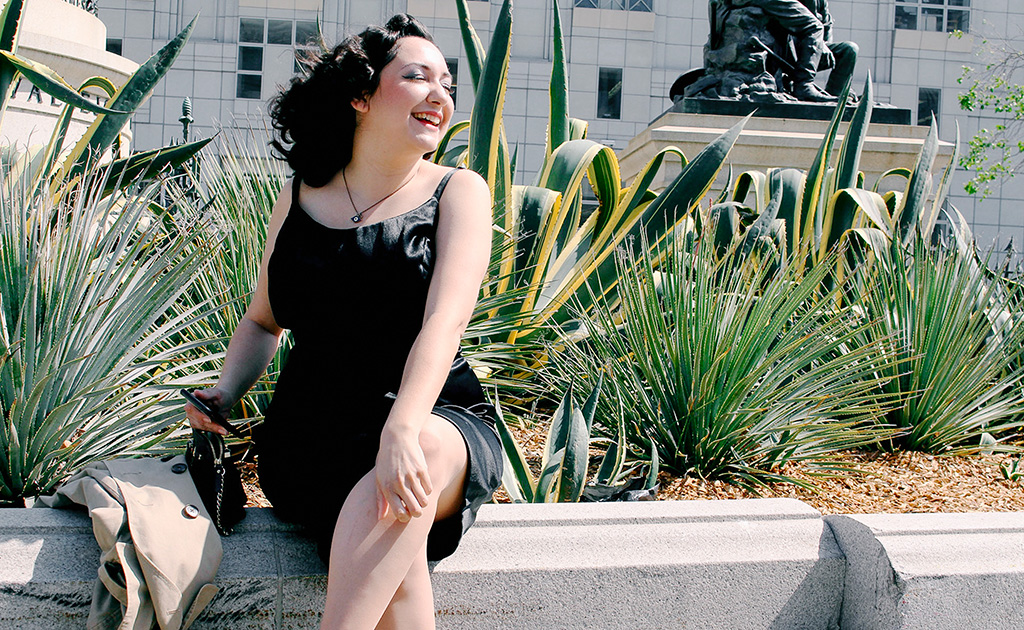
Our Favorite Vintage on Tap Videos
-
How to Sew a Cape: This video uses our Camden pattern to help you sew a vintage-inspired cape. -
Bust Adjustments: This round-up of bust-adjustment videos focuses on fitting your bust using vintage patterns. -
How to Sew Lingerie: These videos feature a few Seamwork patterns, including the Geneva panties and Almada robe. -
Machine Techniques: These videos cover some little techniques that make a big difference, like sewing a bias facing and a kick pleat. -
Patterns by Gertie: No vintage sewing video collection would be complete without a nod to Gertie!
Documenting Yourself
You’re essentially inviting us to come into your home and watch you sew. What are some of the challenges of being so open and personal with your sewing?
The biggest challenge about being so open and personal through Vintage on Tap is that when I’m not feeling inspired, the entire channel suffers. Creating each project is an act of love; I genuinely want to see more people confident through sewing. Demystifying sewing is part of the journey I want to show. However, when life gets me down, I’m stressed, or not feeling like myself, that love doesn’t translate. As a result, there might be stretches of time without videos.
How do you think video helps you connect to the sewing community in a unique way? What does this mean to you?
In an age of globalization, being able to talk to a sewist who lives thousands of miles away, and who might have grown up just like me—in an uninspiring place where no one knows how to use a sewing machine—I want to talk to her. Video gives me the ability to give clear instructions and show specific movements, and a viewer can see exactly what I’m creating and can make it at home.
To me, creating sewing videos means that I can share my knowledge and hope that other people feel as happy and confident with things they’ve made by their own hands.
What do you want to do with your videos in the future?
In the future, videos will be even better and released with more frequency! This means finding room for improvement in our film production and in the projects themselves. I would love to expand into filming video courses, including sew alongs or sewing capsule collections. There’s always room for improvement in our space, and Jose and I are looking forward to continuing to grow our YouTube catalog into the future!


